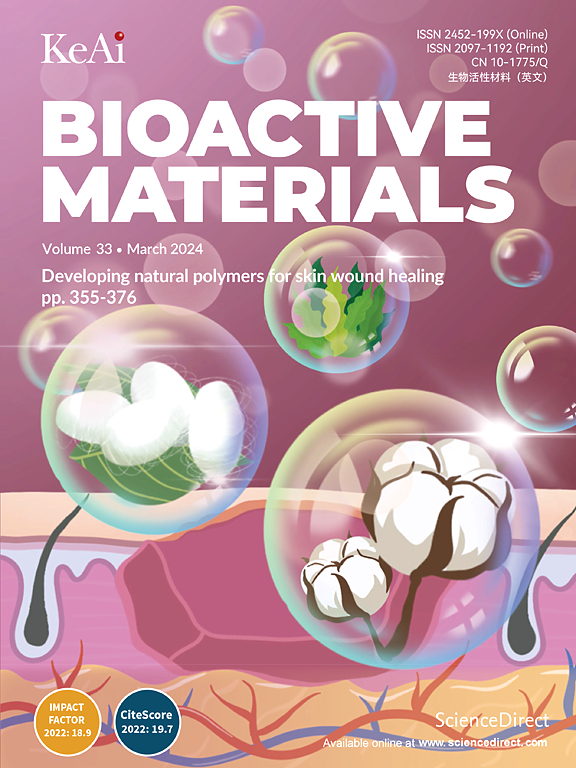基于补偿效应的氧化应激管理微针治疗银屑病。
IF 18
1区 医学
Q1 ENGINEERING, BIOMEDICAL
引用次数: 0
摘要
活性氧(ROS)水平升高会引发氧化性DNA损伤,这是银屑病恶化的重要因素。然而,正常的ROS水平对于细胞信号传导、细胞生长调节、分化和免疫反应至关重要。为了解决这个问题,我们开发了受补偿效应启发的ROS控制策略。DNA纳米结构具有比线性核酸分子在生理环境中更稳定的优点,并被精心制作并纳入微针(MN)中。这些纳米结构调节ROS水平,促进IL-17A siRNA向银屑病病变的传递。我们的研究结果表明,这种经皮给药系统有效地控制银屑病微环境中的ROS水平,抑制焦亡和异常免疫激活。此外,调节ROS水平可增强IL-17A siRNA的治疗效果,为银屑病提供了一种有前景的原位治疗方法。本文章由计算机程序翻译,如有差异,请以英文原文为准。

Compensatory effect-based oxidative stress management microneedle for psoriasis treatment
Reactive oxygen species (ROS) at elevated levels trigger oxidative DNA damage, which is a significant factor in psoriasis exacerbation. However, normal ROS levels are essential for cell signaling, cell growth regulation, differentiation, and immune responses. To address this, we developed ROS control strategies inspired by compensatory effects. DNA nanostructures with the advantage of being more stable than linear nucleic acid molecules in physiological environments were exquisitely fabricated and incorporated into microneedles (MN). These nanostructures regulate ROS levels and facilitate the delivery of IL-17A siRNA to psoriatic lesions. Our findings demonstrate that this transdermal drug delivery system effectively manages ROS levels in the psoriatic microenvironment, inhibiting pyroptosis and abnormal immune activation. Moreover, modulating ROS levels enhances the therapeutic impact of IL-17A siRNA, offering a promising in situ treatment approach for psoriasis.
求助全文
通过发布文献求助,成功后即可免费获取论文全文。
去求助
来源期刊

Bioactive Materials
Biochemistry, Genetics and Molecular Biology-Biotechnology
CiteScore
28.00
自引率
6.30%
发文量
436
审稿时长
20 days
期刊介绍:
Bioactive Materials is a peer-reviewed research publication that focuses on advancements in bioactive materials. The journal accepts research papers, reviews, and rapid communications in the field of next-generation biomaterials that interact with cells, tissues, and organs in various living organisms.
The primary goal of Bioactive Materials is to promote the science and engineering of biomaterials that exhibit adaptiveness to the biological environment. These materials are specifically designed to stimulate or direct appropriate cell and tissue responses or regulate interactions with microorganisms.
The journal covers a wide range of bioactive materials, including those that are engineered or designed in terms of their physical form (e.g. particulate, fiber), topology (e.g. porosity, surface roughness), or dimensions (ranging from macro to nano-scales). Contributions are sought from the following categories of bioactive materials:
Bioactive metals and alloys
Bioactive inorganics: ceramics, glasses, and carbon-based materials
Bioactive polymers and gels
Bioactive materials derived from natural sources
Bioactive composites
These materials find applications in human and veterinary medicine, such as implants, tissue engineering scaffolds, cell/drug/gene carriers, as well as imaging and sensing devices.
 求助内容:
求助内容: 应助结果提醒方式:
应助结果提醒方式:


